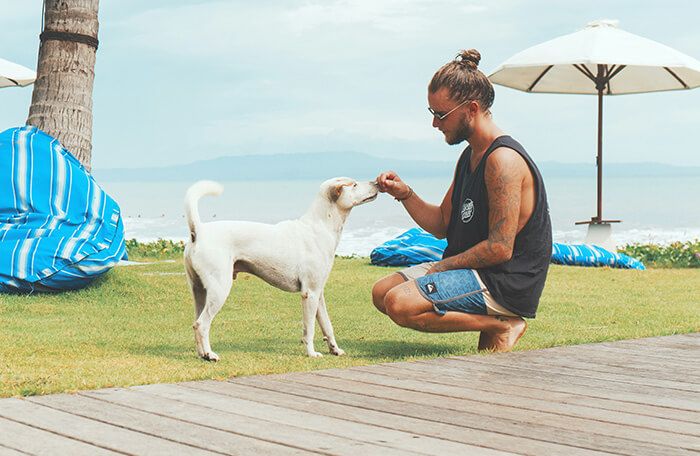Resource guarding is more common than you think, and the good news is: it’s highly workable. Resource guarding is when a dog protects something they find valuable—like food, toys, space, or even a person. It might look like growling when you approach their bowl, snapping over a toy, or stiffening when someone gets too close. If you have noticed this behavior, you’re not alone!
As a balanced dog trainer in San Diego, I approach resource guarding by addressing both the emotional roots and the behavioral symptoms.
Why Does Resource Guarding Start?
-
Instinctual Behavior: In the wild, guarding resources helped dogs survive. It's not “bad,” just misplaced behavior when they are now part of our family and in a shared space.
-
Lack of Structure: Dogs without clear rules often feel like they have to manage the world themselves—including protecting their “stuff.”
-
Insecurity or Anxiety: Nervous dogs may guard out of fear of losing control of something they value.
-
Reinforced by Accident: If you back off when your dog growls, you’ve accidentally taught them that guarding works. Repeat this enough times (or taunt them because you think it's funny) this will turn in to a big problem fast!
Tips to Start Turning Resource Guarding Around
1. Create a Calm Feeding Routine
Feed your dog in a calm, low-distraction space. Have them sit before placing the bowl down. Don’t hover or test them—build trust through consistency. (hot tip: You can also hand feed them!)
2. Don’t “Trade” All the Time
Yes, trades can work, but don’t bribe your dog to give things up. Instead, teach a reliable “out” or “drop it” and reward after they comply—not as a negotiation.
3. Use Leash Pressure for Accountability
If your dog guards objects or space, a leash can help you guide them away calmly without creating confrontation.
4. Claim the Space
If your dog guards a couch or bed, calmly ask them to move. Use body/spatial pressure, leash guidance, and a confident energy. You don’t need to be aggressive—just assertive and don't back down.
5. Don’t Avoid It—Work Through It
Avoiding triggers doesn’t fix the root issue. Work with a balanced trainer to desensitize your dog to touch near their food or toys in a safe, progressive way.
6. Get Clear on Boundaries
Dogs thrive when they know what’s expected. Resource guarding often fades when a dog is given a structured routine with clear leadership and consequences.
Need Help with Resource Guarding in San Diego?
At Lupa K9, we help dogs and owners overcome challenging behaviors with proven, balanced methods. Whether you’re dealing with food guarding, toy aggression, or possessiveness over people, we’ll help you build a safer, calmer relationship with your dog—without fear or force.
Contact us for in-home dog training in San Diego and let’s help your dog let go of the need to guard what they love.

